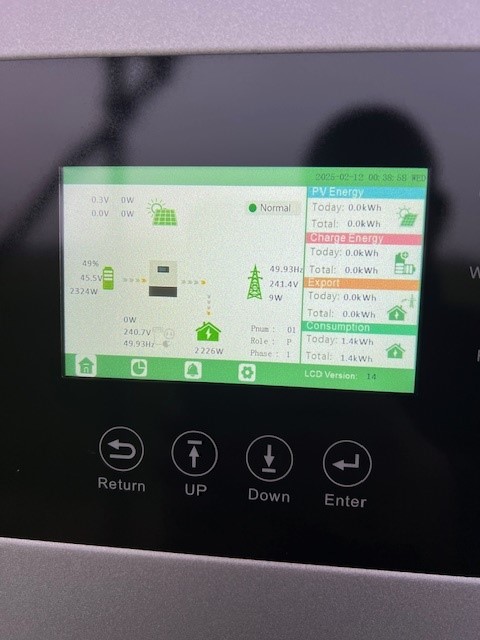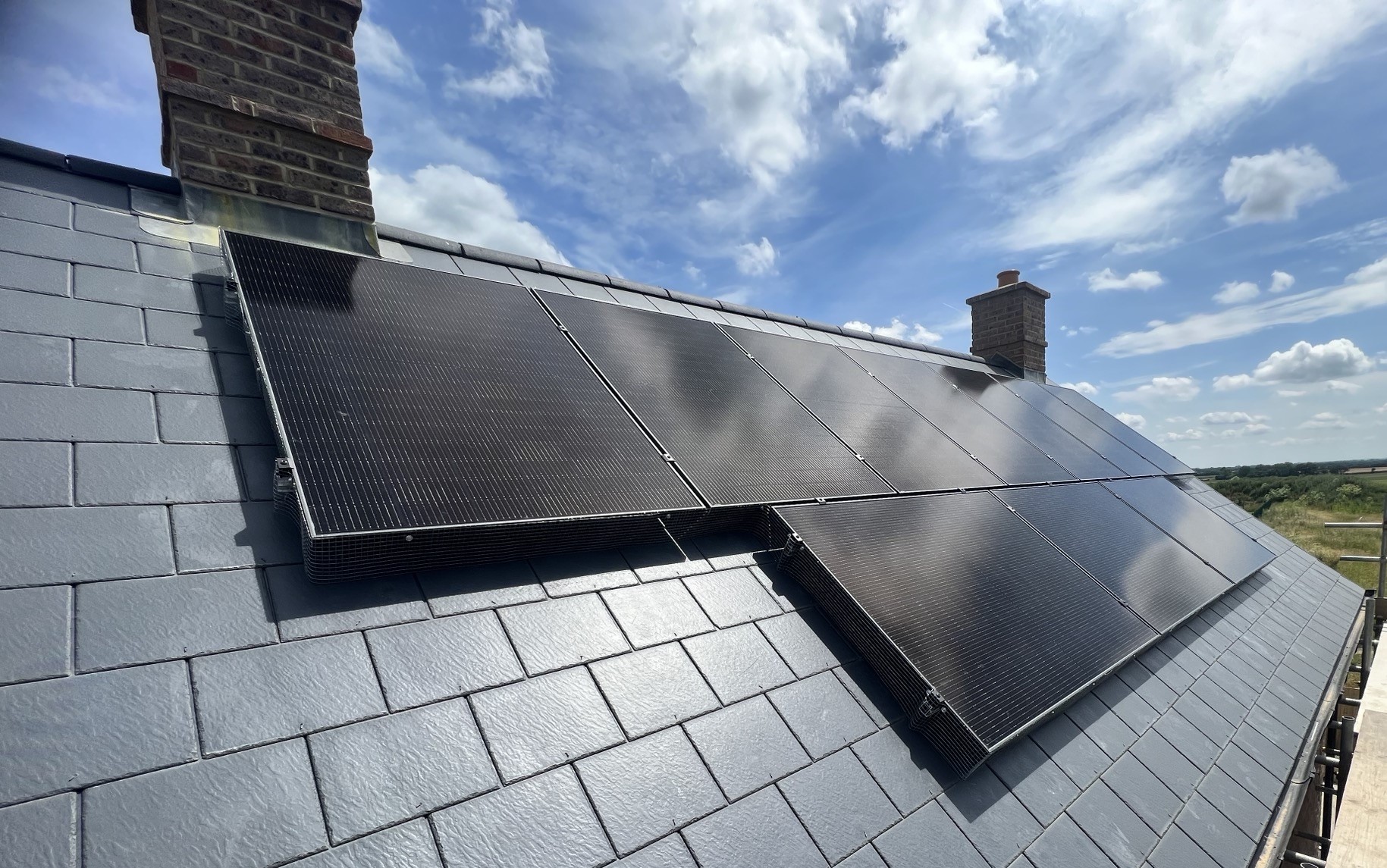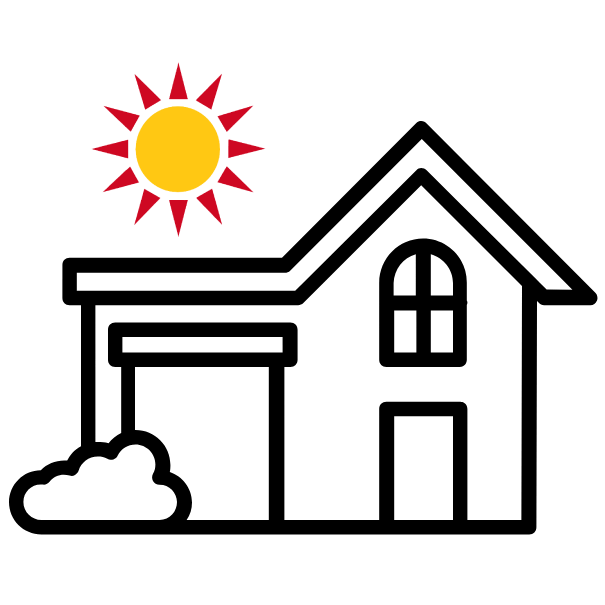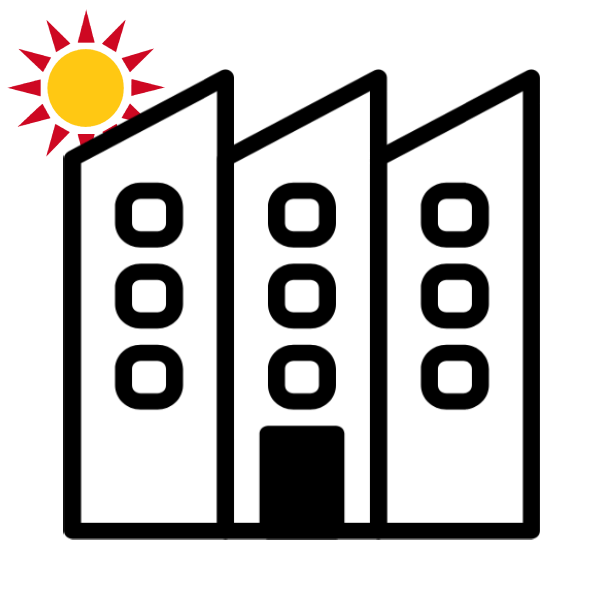Your property runs on AC (alternating current) electricity – solar panels produce DC (direct current) electricity. In order to convert the power your solar panels generate into usable electricity, you need a solar inverter installed. There are many brands of solar inverters on the market and here at SolarTherm UK we use two different types – string inverters or power optimisers. This article will investigate the difference between the two and explain what type of property they are suitable for.
All solar PV installations require a solar inverter but knowing when to install a string inverter and when to install a power optimiser system is what our team of expert designers and installers will advise.
String Inverters – What are They and When do I Need One?
Solar panels when installed are wired together to form an array, the panels generate collective DC electricity which is sent to a string inverter to be converted to AC electricity. At SolarTherm UK we will install either a Growatt, Solis, Solax or LuxPower hybrid inverter into your property along with a generation meter.
The output of the entire string is monitored and optimised for maximum efficiency. Maximum Power Point Tracking (MPPT) is used to find the point that the solar array generates the maximum amount of power. This is not always a feature in cheaper equipment.
Advantages
- Affordability: string inverters are typically cheaper due to less hardware for the system and less moving parts.
- Fewer Connections: a string inverter has less connections making it easier to troubleshoot, fault find and repair if things go wrong.
- Greater Variety: At SolarTherm UK we offer a variety of well performing, affordable string inverters – Growatt, Solis, Solax and LuxPower hybrid inverters – these are just a few that we offer.
- Monitoring: track your energy generation and consumption using the monitoring system as an added extra.
Disadvantages
- Reduced Efficiency: if one panel is shaded, dirty or faulty it brings down the performance of the whole string. However, there are ways around this with bypass diodes and multi cell panels.
- Limited System Expansion: if you look to expand your solar system in the future chances are you will need to install an additional string inverter as well.
- Shorter Life Span: string inverters have short life spans – usually around 8-12 years, compared with some optimised systems that have warranties of 20 years.
- Monitoring: the monitoring system only allows you to see the total energy generated by your solar panels, it doesn’t allow you to see each panel individually, like an optimised system such as SolarEdge does.
Microinverters – What are They and How do They Work?
Microinverters are a smaller version of the traditional inverter. Each solar panel has its own inverter which converts the DC electricity into usable AC electricity. Enphase Energy founded the technology in 2006 and is the most-established brand of microinverter, but many others are now catching up.
Advantages
- Increased Generation: as each panel operates individually, if one panel fails, is in shade or covered in dirt, it won’t have a major impact on the entire system.
- Individual Panel Monitoring: you can monitor your system and every individual panel at any time, making it easier to detect faults, search underperforming panels and resolve any issues.
- Safety: you can isolate each panel to shut down power without impacting the rest of your panels. This offers greater protection for installers, maintenance, firefighters and of course your property. Some systems will also have safe shutdown too.
- Design Flexibility: microinverters allow flexibility in your design. If you have multiple orientations , complex roof shapes or space limitations, microinverters allow for multiple brands and wattages of solar panel to be installed alongside one another.
- Modularity and Scalability: if you are looking to expand your solar system in the future, microinverters have the ability to do so without having to upgrade your inverter like in a traditional string inverter.
- Long Life Span: microinverters typically last around 25 years – reflected by the long warranty available on them.
Disadvantages
- Maintenance Requirements: if your microinverter fails and needs maintenance or replacement, your solar installer will need to gain access to your roof, possibly incurring fees for erection of scaffolding, making it more expensive to maintain.
- Cost: as anything that brings additional benefits, microinverters also being the added cost. They are typically more expensive to install compared to string inverters.
Power Optimisers – the Happy Medium
Like microinverters, power optimisers allow each panel to operate individually without any negative impact on the rest of the string if there’s shading, dirt or an under-performing panel. The optimiser constantly adjusts the voltage and current of its solar panel to ensure it operates at it’s maximum power point. On a traditional string array, if one panel is under-performing it brings down the performance of the whole string.
Advantages
- Design Flexibility: power optimisers allow greater flexibility in system design. Installers like SolarTherm UK can install solar PV systems even on the most challenging rooftops. Whether it’s east/west-facing roofs, flat roofs, or areas with partial shading, power optimisers make previously unsuitable spaces viable for solar installation.
- Energy Savings: boosting energy production decreases the length of return on investment. The power optimiser ensures that no electricity is lost and the system is working to its maximum efficiency.
- Oversizing of the System: power optimisers allow more panels to be installed in the array going through a single inverter – doubling the inverter power in some cases.
- Battery Storage Ready: power optimisers are ready to integrate with a solar battery storage system. The DC electricity coming from the panels can be routed efficiently to your battery without the need to convert from AC back to DC.
- Safety: Power optimisers incorporate safety features such as Rapid Shut Down (RSD), which enhances protection for installers and firefighters by quickly de-energising the system in the event of an emergency.
- Individual Panel Monitoring: at SolarTherm UK we install the SolarEdge power optimiser system, which comes with it’s own monitoring hub that you can observe to track each panels’ performance and be aware of any issues as they occur, meaning they can be resolved quicker.
- Long Life Span: as with microinverters, power optimisers have a long life span, matched with a 25 year warranty.
Disadvantages
- Cost: power optimiser incur an additional cost to a standard string inverter. For installations not affected by shading, roof viability and levels of performance the benefits may not justify the higher costs but will offer a much better system.
- Increased System Complexity: power optimisers require additional wiring and components increasing the risk of system failure if not installed with care and by a qualified SolarEdge installer.
- Limited Compatibility: at SolarTherm UK we use SolarEdge as a power opimised system and pair it with the SolarEdge inverter and compatible solar PV panels. SolarTherm UK have installed around 4300 SolarEdge systems in the UK and EU.
Which System is Best for Your Installation?
Choosing between string inverters, microinverters, and power optimisers depends on your property’s layout, shading issues, budget, and future energy goals. While string inverters offer a cost-effective solution for straightforward installations, microinverters provide exceptional performance and flexibility for more complex or shaded roofs—albeit at a higher cost. Power optimisers strike a balance between the two, offering enhanced performance and monitoring with greater design flexibility.
At SolarTherm UK, we take the guesswork out of choosing the right system. Our expert team will assess your property’s specific needs and recommend a tailored solar solution that maximises your return on investment and long-term energy savings. No matter your roof type or energy goals, we’re here to help make your switch to solar simple, efficient, and cost-effective.
A design is crucial, we will sell, survey, design and install your solar system. See if others do the same! It’s a common solar company avoidance error.
Your home. Your energy. Your future.





